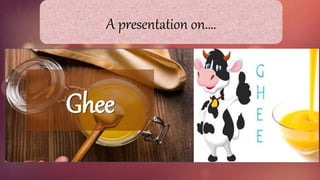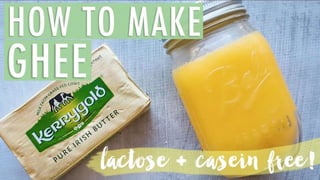The document discusses ghee, including its definition as clarified butter, types, properties, methods of preparation and manufacturing, defects, adulteration, food value, benefits and uses. It describes the common methods like desi, creamery butter and pre-stratification. Equipment used in manufacturing includes cream separators, ghee boilers, butter churners and filtration tanks. Ghee provides energy, good fats and vitamins while benefits include memory, skin and hair health. It is commonly used in Indian and Middle Eastern cooking and can be packaged in materials like tin, glass or laminates for storage.





















































